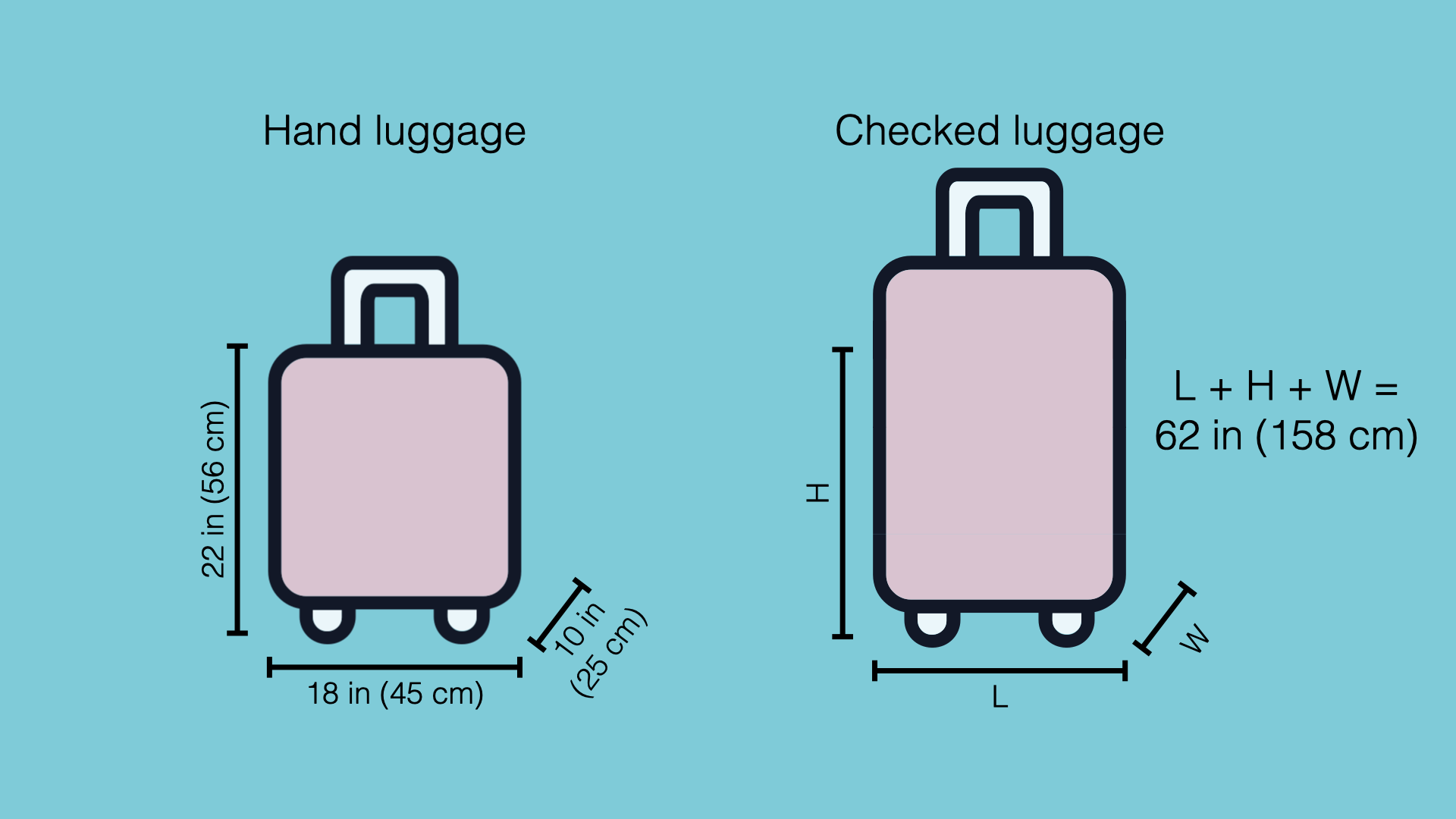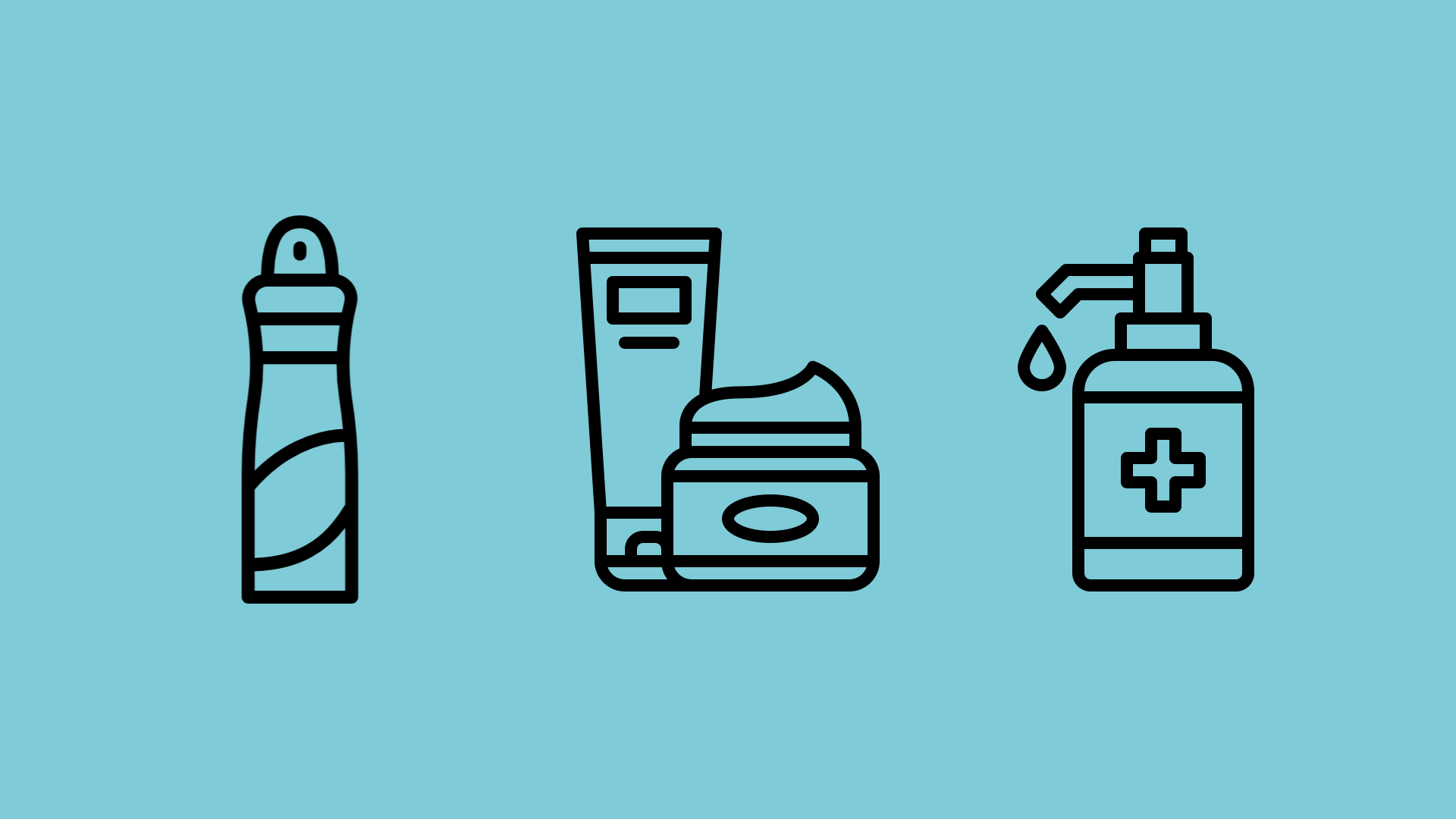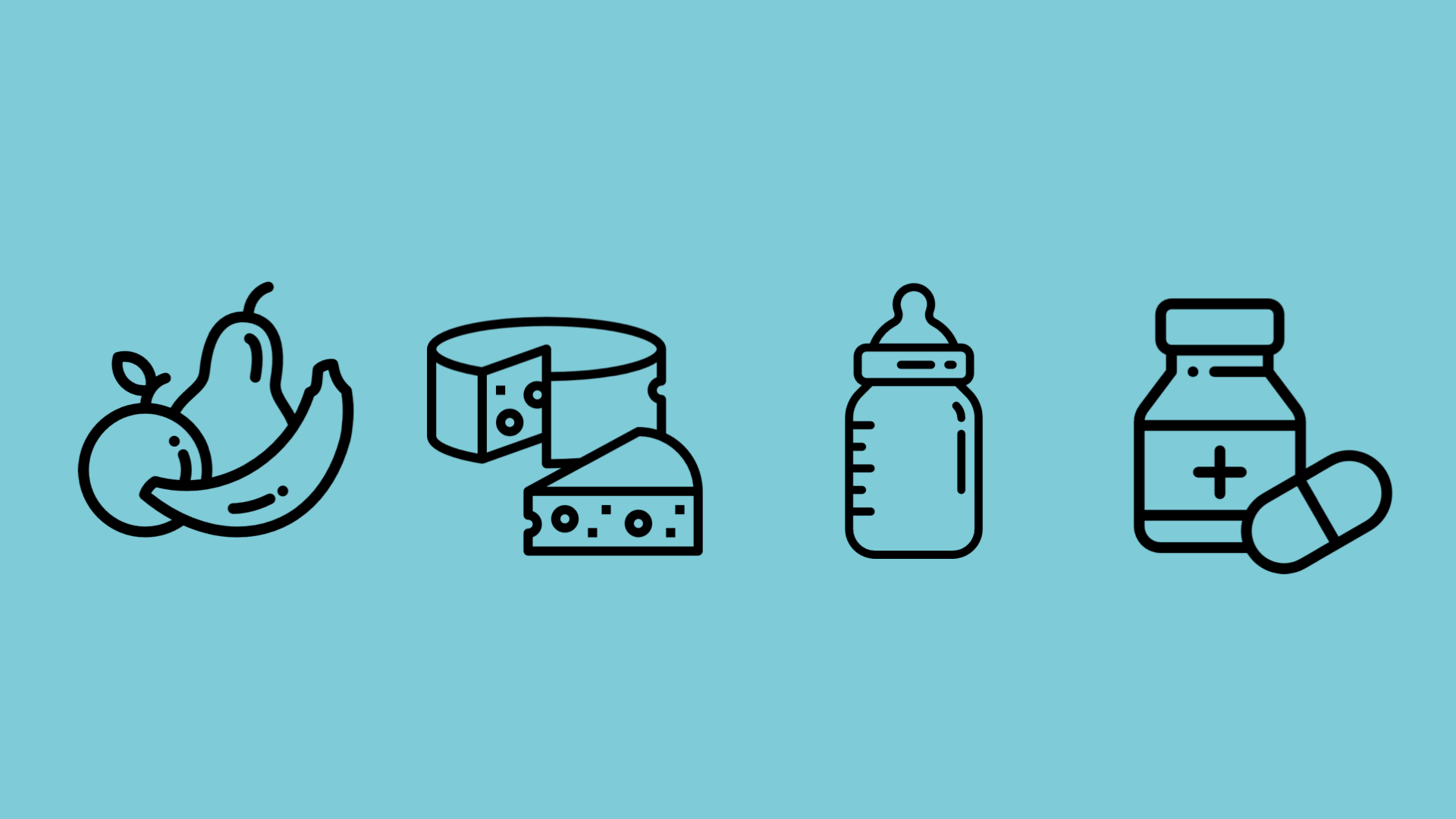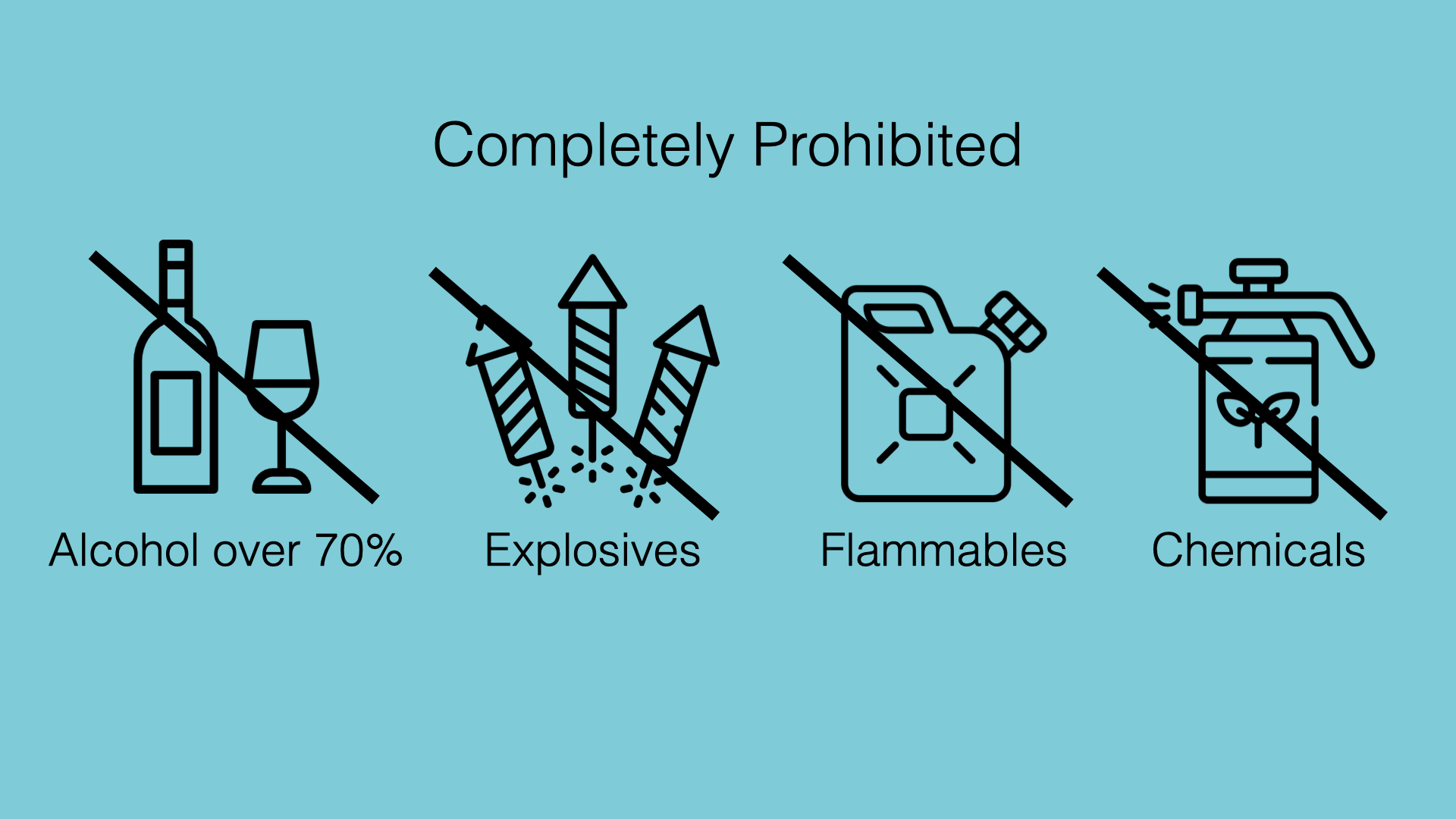CAN I TAKE...
What You Can and Can’t Take on a Plane [Essential List]
Packing your luggage before the flight might be the most confusing part
of travelling. You should know all the rules about luggage to avoid any
unpleasant difficulties at the airport. No one wants to be late for a
flight or throw away belongings just to get on a plane. To start your
journey seamlessly without unnecessary stress, go through this article
and follow the rules while packing your bags.
Carry-on or checked luggage
First step before packing is deciding what kind of luggage you need for
your trip. There are two types of luggage you can take on a plane:
carry-on (hand) and checked. Each has its own characteristics (size,
weight) and different rules apply to them.
Carry-on luggage is a
small-sized bag you can take with you on a plane. There’s standardized
size of carry-on luggage defined by the
International Air Transport Association (IATA).
Carry-on luggage should have a maximum height of 22 in (56 cm), length
of 18 in (45 cm) and width of 10 in (25 cm). However, these guidelines
are not mandatory.
Every airline defines its own allowed size and
weight for carry-on bags, so you should check it at your airline
website, where all the information is provided. Here is a list of some
airlines and carry-on size limit:
- United Airlines:
56cm x 35cm x 22cm (22in x 14in x 9in) - Air Canada:
55cm x 40cm x 23cm (21in x 15in x 9in) - Japan Airlines:
55cm x 40cm x 25cm (22in x 16in x 10in) - RyanAir:
55cm x 40cm x 20cm (21in x 15in x 8in) - LOT:
55cm x 40cm x 23cm (21in x 15in x 9in) - Air France:
55cm x 35cm x 25cm (22in x 14in x 10in) - WizzAir:
55cm x 40cm x 23cm (21in x 15in x 9in)

Some of the airlines also define maximum weight for your luggage, but
sometimes there’s no weight limit. The biggest advantage of choosing
carry-on luggage is that it is free of charge. However, some cheap
airlines like RyanAir and WizzAir allow bigger sizes of carry-on bags if
you pay an extra fee.
Another advantage is that you don’t have to
wait for your luggage after arrival and there’s no risk of losing it.
But the main drawback of choosing carry-on is the size limits, which
don’t allow you to pack more items. What is more, there’s many
restrictions on what you can take in your carry-on.
If you want to pack a lot of things in your luggage and avoid
strict limits, you should consider choosing checked luggage. This kind
of luggage can weigh up to 32 kg (70 lb) and measure (height + width +
length) no more than 158 cm (62 in).
It's easier to pack all the
things you need for your trip when you choose checked luggage, but you
should be aware of the risk that it can be delayed or even lost.
Therefore, it is recommended to pack any valuable items (money, jewelry,
electronics, documents and medications) in your carry-on.
What You Can’t Take in the Carry-on Luggage
CAN I TAKE...
...ON THE PLANE?
Can I take liquids in carry-on?
Yes, you can
take liquids in carry-on luggage. However, there's a 3-1-1 rule, which says how many liquids you can
take on a plane in your hand luggage. Number “3” means that each liquid
must be in a 3,4 oz (100 ml) or less container. All containers must be
placed in 1 transparent, quart-sized (1 litre) bag and each passenger
can have only 1 bag.
You can easily buy travel-sized cosmetics or
empty containers with zip clear bag, which you can take with you in
carry-on luggage. Even if you have less than 3,4 oz (100 ml) of shampoo
in a 8,5 oz (500 ml) bottle, you still need to pour it in a 3,4 oz
(100ml) container or buy new travel-sized shampoo.

Can I take a deodorant in a carry-on?
It is allowed to take any type of
deodorant on a plane in carry-on luggage . Liquid deodorants such as spray, roll on, gel or cream must fit 3,4
oz (100 ml) restrictions and be placed in quart-sized, clear bag.
Only solid deodorants don’t follow the 3-1-1 rule and you are
allowed to take them with you in any size you want.
Can I put make-up in my carry-on?
You can take make-up products in your carry-on. However, if your items have liquid or gel consistency (mascara, eye-liner, foundation) you must follow the rules for liquids. Their containers should have a maximum 3,4 oz (100 ml) capacity and be placed in a transparent bag.
Can I take eye drops in carry-on luggage?
Yes, you can
take eye drops in carry-on luggage, but you have to follow 3-1-1 rule for liquids. The container must
be no more than 3.4 oz. (100 ml) and be placed in a transparent bag.
If the eye drops are your essential medication, you can take
more than 3.4 oz (100 ml), but remember to declare it to the screening
officers.
Is hand sanitizer allowed in carry-on?
According to the TSA, it is allowed to take one liquid hand sanitizer
in a max. 12 oz (355 ml) container on a plane in your carry-on
luggage. Keep in mind that liquids in containers above 3,4 oz (100 ml)
will be screened separately at the checkpoint.
If you want to
read more about Covid-19 travel information, you can visit the
TSA website.
TOP ALLOWED AND PROHIBITED ITEMS
What kind of food can I take in carry-on luggage?
If the food you want to take with you is liquid, gel or in a spray,
you have to follow the 3-1-1 rule for liquids. Containers of liquid
food can have up to 3,4 oz (100 ml) capacity and be placed in a clear,
quart-sized bag. Food such as butter, honey, ketchup, hummus or jelly
are considered liquid.
For solid foods like potato chips,
fruits, candies or veggies there’s no restriction and you can have
them in hand luggage. However, some countries do not allow you to
bring some fruits, meats and other agricultural products. Please make
sure the country of your destination allows you to bring the food you
want.

Can I take cheese in carry-on luggage?
You are allowed to take any cheese with you on a plane. For solid
cheese such as gouda, parmigiano, cheddar, grana padano, reggiano
there are no specific restrictions. However, creamy cheese
(mozzarella, ricotta, feta cheese, blue cheese, goat cheese) has to
meet 3-1-1 liquids rule, which means you can take certain cheese in a
container each up to 3.4 oz (100 ml) and placed in a transparent bag.
If you have any stinky cheese in your hand luggage, it is
suggested not to take it out during the whole flight, since the smell
of cheese might be unpleasant for other passengers.
Taking baby food in carry-on luggage
For baby food the 3-1-1 liquid rule is not applied. It means you can
take as much as you want baby food (formula, breast milk, juice) in
carry-on, but you will need to take it out from your bag to be
separately screened.
What is more, you can bring breast milk
even when you travel without your child. For more information about
travelling with babies visit the
TSA website.
Taking ice in carry-on luggage
You can take ice and any other frozen items in your carry-on as long as they are completely frozen during security screening. If the frozen item is partially melted or there is any liquid in the container, it has to meet 3-1-1 liquids rule.
Can I take dry ice on the plane?
According to the FAA, dry ice is allowed both in carry-on and checked
luggage. However there's a quantity limit, which is 5.5 lbs (2.5 kg)
per package and per person. What is more, before your flight you need
to get your airline’s approval.
The container with dry ice
cannot be airtight and it must make the release of carbon dioxide gas
possible. If you want to pack dry ice in checked luggage, mark the
package “Dry ice” or “Carbon dioxide, solid” and indicate the net
quantity.
Sharp items in carry-on luggage
Sharp items
like knives, razors, box cutters can be used as a weapon, so it’s
dangerous to take them in hand luggage on a plane.
Small tools
such as tweezers, nail clippers, razors and scissors with blades below
4 in (10 cm) length are allowed in carry-on. Remember to wrap it
safely to prevent any injury. Bigger knives, box cutters and ice axes
are not allowed in carry-on, but it’s ok to take them in checked
luggage.

Can I put scissors in carry-on luggage?
If you want to
take scissors in a carry-on bag, its length has to be less than 4 in (10 cm)from the pivot point.
Bigger scissor must be securely wrapped and placed in checked luggage.
For EU flights, blades of scissors must be less than 6 cm from
the fulcrum.
Can I have a lighter in carry-on luggage?
According to the TSA, it is allowed to take butane or zippo
lighters in carry-on luggage. However, blue flame lighters or jet flame lighters are not allowed
to take on a plane.
Remember that if you have lighter in your
pocket, it has to stay there until your arrival. It’s forbidden to
take out a lighter during the flight.
Electronics in carry-on luggage
Most of the
electronics are allowed in carry-on luggage. Small, portable devices, which size is smaller than a laptop like
phones, smart watches etc. can be inside your luggage during
screening.
However, large electronics (video-game consoles, laptops)must be
screened separately at the security checkpoints. You should take them
out of your bags and remove the case during X-ray scanning.
Can I take a powerbank in carry-on?
Yes, power banks with lithium ion battery can be placed in carry-on luggage. However, you can’t put them in your checked luggage. If you want to read more see this article about allowed batteries .
Is e-cigarette allowed in carry-on?
Electronic cigarettes and vaping devices are allowed on the plane and must be packed in carry-on luggage or on the person. What is more, e-cigarettes can contain up to 3,4 oz (100 ml) liquid.
Can I take a blender on the plane?
You can
take a blender in your carry-on luggage, however you must remove the blades. Any sharp elements must be
safely wrapped and placed in your checked luggage.
Make sure the
blades are properly secured to prevent any injury to officers and
luggage handlers.
Can I put batteries in my carry-on bag?
Depending on the kind of batteries, some of them are allowed to pack
in carry-on luggage, but some are prohibited. You can take with you
dry cell alkaline batteries(AA, AAA, C, D, 9-volt etc.), dry cell
rechargeable batteries (NiMH, NiCad), lithium metal batteries (up to 2
grams of lithium per battery) and lithium ion batteries (100 Wh per
battery). Those kinds of batteries are mostly used in personal
electronic devices.
If you want to take up to two spare lithium
ion or metal batteries, you should get airline approval. For more
information, see article
about flying with batteries
and how to pack them safely or read FAA regulations on batteries.
Can I take a pet in carry-on luggage?
You should contact your airline to make sure it’s allowed to
take small pets on a plane.
If so, keep your pet in a carrying case, but during screening
put an empty case in the X-ray machine. Remember to always control
your pet with a leash.
Balloons on the plane
It is allowed to take balloons on the plane in carry-on and checked luggage. However, balloons cannot be inflated.
Can I bring cremated remains on the plane?
It is suggested to contact your airline to make sure they allow
taking cremated remains on the plane. If you want to take it in your carry-on luggage, it must pass
through X-ray screening. It is better to use light-weight container
made of plastic, wood, cloth or cardboard so the X-ray can clearly
scan its contents.
Metal, stone or ceramic containers
might not pass through screening. The officers are not allowed to open
the cremation container and inspect what’s inside of it.
When
you travel internationally, you should contact the embassy of your
destination to get the information concerning the transport of
cremated remains.
Are self-defence items allowed in carry-on luggage?
Any self-defence items, such as
pepper spray or mace
are completely not allowed in carry-on luggage. Those items are
considered a weapon, so you cannot take them with you on a plane.
However, you can take only one pepper spray or mace in a 4 oz (118 ml)
container in checked luggage.
The container must have a safety
mechanism to prevent any discharge. For more information visit
faa.gov.
What is not allowed to take on a plane?
It is forbidden to take any hazardous materials (hazmat) on the plane
with you. You are not allowed to have those materiales neigher in your
checked luggage, carry-on luggage nor on your person.
Here is a
list of items under the hazardous materials category:
- Flammable liquids and solids
- Explosives, ammunition, fireworks
- Gases and aerosols
- Chemicals, toxic, infectious and radioactive materials
- Oxidizers, organic peroxides and corrosives
- Alcohol over 70%

Explosives, ammunition and fireworks
Those items include firecrackers, party poppers, fares, bottle
rockets, sparklers, black powder. It is forbidden to take them in
checked luggage and in your carry-on luggage.
Some unloaded
firearms and small ammunition can be placed in checked luggage, but
you should pack it properly and declare it to the officers.
Aerosols and gases
Aerosols, such as spray paint, air freshener, spray starch, cooking
spray, etc. are not allowed to be taken on the plane. However, some
personal cosmetic or medical aerosoles like deodorant, hairspray are
allowed.
Compressed, flammable, or toxic gases (oxygen, butane,
propane, refrigerant gases, pressurized scuba tanks) are completely
forbidden on the plane.
Explosives, ammunition and fireworks
Those items include firecrackers, party poppers, fares, bottle
rockets, sparklers, black powder. It is forbidden to take them in
checked luggage and in your carry-on luggage.
Some unloaded firearms and small ammunition can be placed in checked
luggage, but you should pack it properly and declare it to the
officers.
Aerosols and gases
Aerosols, such as spray paint, air freshener, spray starch, cooking
spray, etc. are not allowed to be taken on the plane. However, some
personal cosmetic or medical aerosoles like deodorant, hairspray are
allowed.
Compressed, flammable, or toxic gases (oxygen, butane,
propane, refrigerant gases, pressurized scuba tanks) are completely
forbidden on the plane.
Flammable liquids
Liquids that can easily catch a fire like fuels, solvents, adhesives,
lighter fluid and some paints are prohibited on the plane.
Equipment, which contains fuel like camping stoves must be
emptied of fuel before you get on the plane.
Corrosives and oxidizers
You are not allowed to put in your luggage items such as pool chemicals, bleaches, fertilizers, car batteries, drain cleaners or paint strippers.
Toxic, infectious substances and radioactive materials
It is forbidden to bring on a plane some of the pesticides and
herbicides, which are known to be infectious or pathogenic. Also you
are not allowed to keep any radioactive materials in your luggage.
Radioisotopes, contaminated materials and radioactive medicines
can’t be taken on the plane.































